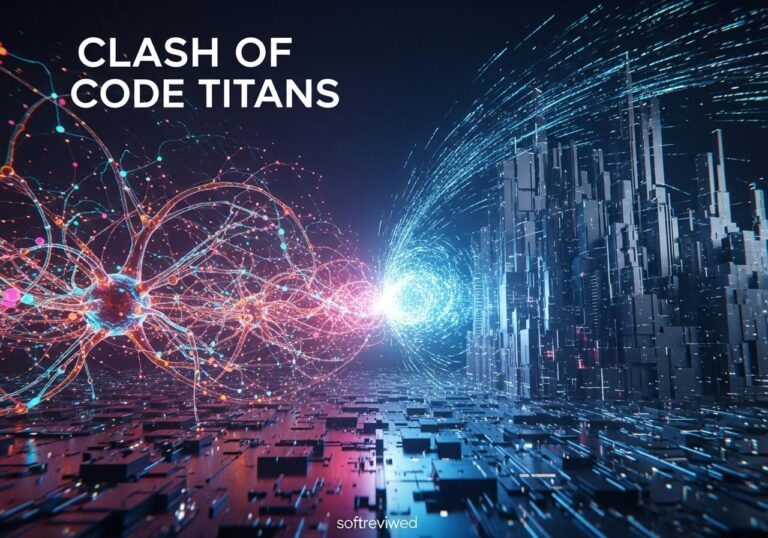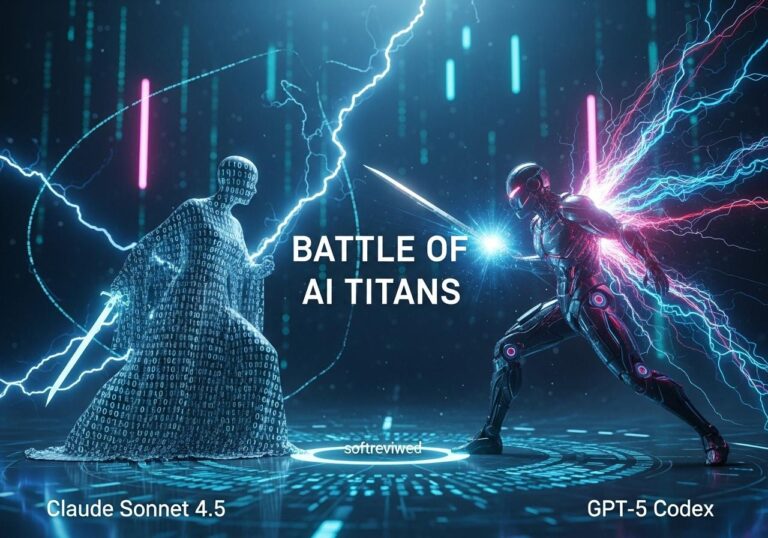Meta’s Llama 4: Revolutionizing AI Compute Power
Exploring the massive computational requirements and potential impacts of Meta’s latest AI model.
Massive Compute Power
Llama 4 requires an estimated 160,000 GPUs for training, approximately 10 times the resources needed for Llama 3.
Raising the Bar
Sets a new standard for computational resources in AI development, potentially leading to increased competition and supply chain challenges.
Accelerating AI Capabilities
Expected to lead to more sophisticated AI models, breakthroughs in natural language processing, and expanded applications across various industries.
Environmental Considerations
The energy consumption of training large models like Llama 4 raises concerns about environmental impact and the need for more energy-efficient computing solutions.
Democratization of AI
Raises questions about the accessibility of advanced AI capabilities to smaller organizations and the potential for a widening gap between tech giants and smaller players in AI development.
Potential Applications
Include enhanced natural language processing, multimodal AI, reasoning and problem-solving, personalization, creative applications, scientific research, and language translation.
The Rise of Llama 4: Meta's Ambitious Leap in AI Compute Power
Introduction
In the ever-evolving landscape of artificial intelligence, Meta (formerly Facebook) is gearing up for a monumental leap forward with its next-generation language model, Llama 4. This ambitious project is set to redefine the boundaries of AI capabilities, but it comes with an equally staggering requirement: a tenfold increase in computational power compared to its predecessor.
Key Takeaway
Meta's Llama 4 is projected to require around 160,000 GPUs for training, approximately ten times the resources needed for Llama 3. This massive increase in compute power signals Meta's commitment to pushing the boundaries of AI technology and maintaining its competitive edge in the industry.
Let's dive deep into what this means for the future of AI, Meta's strategy, and the broader implications for the tech industry.
Understanding Llama 4's Computational Demands
The Scale of Compute Power
To truly appreciate the scale of Meta's ambition with Llama 4, we need to understand the computational requirements:
- GPU Requirements: Llama 4 is estimated to need around 160,000 GPUs for training.
- Comparison to Llama 3: This is approximately ten times the resources used for Llama 3.
Industry Context
To put this in perspective, let's compare it with other major AI models:
| Model | GPUs Required |
|---|---|
| GPT-4 | 25,000 |
| Llama 3 | 16,000 |
| Grok 2 | 20,000 |
| Grok 3 | 100,000 |
| Llama 4 | 160,000 |
As we can see, Llama 4's computational requirements dwarf those of its competitors and predecessors. This massive leap in compute power is not just a number—it's a statement of intent from Meta.
Why Such a Dramatic Increase?
The tenfold increase in computational power for Llama 4 is driven by several factors:
- Model Complexity: Larger models with more parameters can capture more nuanced patterns and relationships in data.
- Training Data Volume: More compute power allows for training on larger datasets, potentially improving the model's knowledge and capabilities.
- Optimization and Fine-tuning: Additional computational resources enable more extensive optimization and fine-tuning processes.
- Competitive Edge: Meta aims to create "the most advanced [model] in the industry next year," according to Mark Zuckerberg.
Meta's Infrastructure Investments
To support the development of Llama 4 and future AI initiatives, Meta is making significant investments in its infrastructure:
Capital Expenditures
Meta's capital expenditures rose by 33% to $8.5 billion in Q2 2024. This increase is primarily driven by investments in servers, data centers, and network infrastructure.
Flexible Infrastructure Approach
Meta is adopting a strategic approach to its AI infrastructure:
- Resource Allocation: The company is designing its infrastructure to flexibly allocate resources between:
- Generative AI training
- Inference
- Core ranking and recommendation tasks
- Staged Development: CFO Susan Li highlighted Meta's strategy of staging data center sites at various development phases. This approach allows Meta to:
- Quickly scale up capacity when needed
- Limit long-term spending commitments
- Adapt to changing technological demands
Long-term Vision
While Meta doesn't anticipate immediate revenue from generative AI products, this infrastructure investment is part of a long-term strategy to develop advanced AI tools for various applications.
Implications for the AI Industry

The scale of Meta's investment in Llama 4 has significant implications for the AI industry as a whole:
Raising the Bar for Compute Power
Meta's move sets a new standard for computational resources in AI development. This could lead to:
- Increased competition among tech giants to secure GPU resources
- Potential supply chain challenges in the semiconductor industry
- A push for more efficient AI training methods to mitigate the need for such massive compute power
Accelerating AI Capabilities
With such a significant increase in computational power, we can expect:
- More sophisticated and capable AI models
- Potential breakthroughs in natural language processing, understanding, and generation
- Expanded applications of AI across various industries
Environmental Considerations
The energy consumption associated with training such large models raises important questions about:
- The environmental impact of AI development
- The need for more energy-efficient computing solutions
- The role of renewable energy in powering AI infrastructure
Democratization of AI
As leading companies like Meta push the boundaries of what's possible with vast computational resources, it raises questions about:
- The accessibility of advanced AI capabilities to smaller organizations and researchers
- The potential for a widening gap between tech giants and smaller players in AI development
- The need for collaborative efforts and open-source initiatives to ensure broader access to AI advancements
Potential Applications of Llama 4
While specific details about Llama 4's capabilities remain undisclosed, the massive increase in computational power suggests significant improvements in various areas:
- Natural Language Processing: Enhanced understanding and generation of human language, potentially approaching or surpassing human-level performance in certain tasks.
- Multimodal AI: Improved ability to process and generate content across different modalities (text, image, audio, video).
- Reasoning and Problem-Solving: More sophisticated logical reasoning and problem-solving capabilities, potentially applicable to complex scientific or mathematical challenges.
- Personalization: Advanced personalization in content recommendations, advertising, and user experiences across Meta's platforms.
- Creative Applications: Enhanced capabilities in creative tasks such as writing, coding, or design assistance.
- Scientific Research: Potential applications in drug discovery, climate modeling, or other computationally intensive scientific fields.
- Language Translation: Near real-time, highly accurate translation across a vast array of languages and dialects.
Challenges and Considerations
Despite the exciting potential of Llama 4, several challenges and considerations must be addressed:
Ethical Concerns
- The potential for misuse of highly advanced AI models
- Issues of bias and fairness in AI decision-making
- The need for robust governance frameworks for AI development and deployment
Data Privacy
- Ensuring the privacy and security of training data
- Addressing concerns about the use of personal data in AI model training
Computational Efficiency
- Developing more efficient training methods to reduce the environmental impact
- Exploring alternative computing architectures (e.g., quantum computing) for future AI development
Model Interpretability
- Ensuring that as models become more complex, they remain interpretable and explainable
- Developing tools and techniques to understand the decision-making processes of advanced AI models
Workforce Impact
- Preparing for potential workforce disruptions as AI capabilities expand
- Identifying new job roles and skills needed in an AI-driven economy
The Road Ahead for Meta and Llama 4
As Meta embarks on this ambitious journey with Llama 4, several key factors will shape its development and impact:
Timeline and Milestones
While specific release dates for Llama 4 haven't been announced, Meta's aggressive infrastructure investments suggest a timeline spanning the next few years. Key milestones to watch for include:
- Completion of new data center facilities
- Announcements of breakthroughs in training efficiency
- Beta testing and early access programs
Collaboration and Competition
Meta's push with Llama 4 will likely spur increased activity across the AI industry:
- Potential collaborations with hardware manufacturers to develop specialized AI chips
- Increased competition among cloud providers to offer the computational resources needed for advanced AI training
- Possible partnerships with academic institutions to explore the capabilities and implications of such advanced models
Regulatory Landscape
As AI models become more powerful, regulatory scrutiny is likely to increase:
- Potential new regulations governing the development and deployment of advanced AI systems
- International cooperation and standards for AI safety and ethics
- Increased focus on the environmental impact of large-scale AI training
Open Source vs. Proprietary Development
Meta's approach to Llama 4 could have significant implications for the AI community:
- Will Meta continue its trend of open-sourcing its AI models, as it did with previous Llama versions?
- How will the balance between open collaboration and maintaining a competitive edge be struck?
- What impact will Meta's approach have on the broader AI ecosystem and the democratization of AI technology?
How Does Meta’s Llama 4 Compare to Nvidia NVLM in Terms of AI Compute Power?
Meta’s Llama 4 and Nvidia NVLM are leading the AI compute power race, each with unique strengths. While Llama 4 showcases impressive language capabilities, nvidia’s new opensource model challenges gpt4 by emphasizing efficiency and scalability, potentially reshaping the landscape for developers seeking robust AI solutions.
Conclusion
Meta's ambitious plans for Llama 4 represent a significant milestone in the evolution of artificial intelligence. The tenfold increase in computational power signals a new era of AI capabilities, with potential impacts reaching far beyond Meta's own products and services.
As we look to the future, the development of Llama 4 raises important questions about the direction of AI research, the environmental and ethical implications of ever-increasing computational demands, and the role of tech giants in shaping the future of artificial intelligence.
While the full capabilities and impact of Llama 4 remain to be seen, one thing is clear: Meta's bold investment in AI compute power is set to push the boundaries of what's possible in artificial intelligence, potentially ushering in a new era of AI-driven innovation and discovery.
As this journey unfolds, it will be crucial for technologists, policymakers, and the public to engage in ongoing dialogue about the responsible development and deployment of such powerful AI technologies. The story of Llama 4 is just beginning, and its chapters will likely shape the narrative of AI advancement for years to come.
Meta’s AI Infrastructure Investment for Llama 4
This chart illustrates Meta’s planned investments in AI infrastructure for Llama 4, comparing computational requirements and capital expenditure across different areas.







